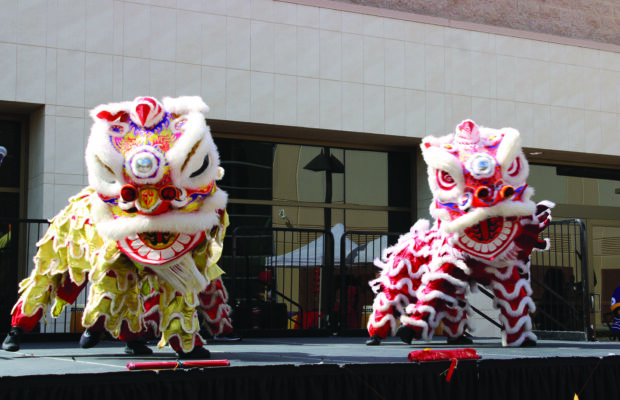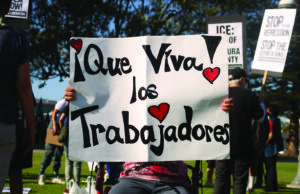CLU celebrates the year of the Dragon

On Feb.23, California Lutheran University [CLU] center for
global engagement hosted its third celebration of the Chinese Lunar
New Year on campus. The celebration marked the end of the month
long celebration of the year of the dragon, featuring a Lion dance
and Taiko Drums.
The event hosted many opportunities for guests to participate in
the celebrations. The tables were draped in a deep red cloth topped
with oranges, symbolic of wealth and luck. Audience members
were handed paper cut-outs with the Chinese character for good
luck. CLU students were even invited onto the stage to play the
Taiko drums. The event was catered by Dinas Dumplings and the
complementary tea stations were a big hit. According to Aaron
Yoshida, a student representing the center for global engagement,
“The dumplings bring prosperity, long life to people,” Yoshida said.
The event first took place to the beat of the Taiko drums, lead
by Togan Daiko [heavenly drums], a 28 year old drumming musical
group based out of the Oxnard Buddhist Temple. The group played
original pieces on their wine barrel drums, meant to symbolize luck
and potential within the new year. Each performance demanded
perfect rhythm and coordination along with synchronized dancing
while drumming. Despite the cultural distinction between this piece
of Japanese culture and Chinese, Diane Noda, a drummer, identified
the performance as a celebration of all Asian cultures. “It’s an Asian
thing, there are Chinese drummers and they are here with the lion
dance that they do. We play at other Chinese and Vietnamese New
Year’s events, they feel [the drums] bring good luck to people,” Noda
said.
The festival’s grand finale ended with the traditional Chinese
Lion dance celebration. Two $1000 lion costumes were crafted out of
bamboo frames, topped with colorful paper mache. Two performers
in each of the dragon costumes demonstrated intricate dances
including the Jong routine of standing on each other’s shoulders.
Spearheading the performance was the Camarillo Kung Fu and lion
dance association led by Master Kee Ling. While professionally
Ling is an Administrative Law Judge, he has been teaching Kung Fu
and Lion dance on the side since 1982. Ling shared the myth of the
lion dance, “Starting 2000 years ago this wild animal would come
and terrorize this village around the Chinese New Year. The village
decided to band together to create a paper mache look-a-like of the
animal [playing] drums and gongs[to chase the beasts away]. The
lion dance came to symbolize chasing away evil spirits and bringing
good fortune and good luck,” Ling said.



